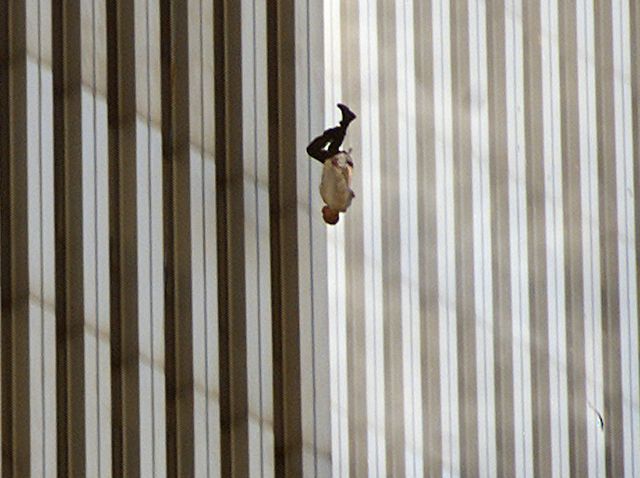Ethics can be described as a set of standards of what is right or wrong. A group of principles or morals that can differ between person to person. Every person will have a different code of ethics or moral guidelines depending on their experiences and values. When it comes to journalism, journalists are faced with many ethical challenges (The MEAA has a set code of ethics which can be seen here). Although I find that the lines are most blurred when it comes to images. Photos taken by journalists aim to achieve awareness or cover a certain event or topic. Often images can be very divisive, (especially when the image is of a sensitive event) and can often lead to heavy criticism from the public, even if his or her intentions are good.
There are many photographs taken and published by photojournalists that are considered by many to be unethical. some examples include:

This photo depicts Oj Simpson after the alleged murder of his wife in 1994. The image was criticised after the illustrator purposely darkened Oj’s skin, intended to give a more dramatic tone but only caused more racial tension.

This photo was taken by Richard Drew during the 9/11 attacks and shows a man jumping out of the world trade centre, falling to his death. This photograph was heavily criticised and many believed it to exploit the man’s humanity and death.
When taking photographs, A journalist must ask themselves how their photos might be perceived by the general public and if the photos they have taken can be seen as ‘ethical’. In the MEAA’s code of ethics, the 9th and 11th codes state that Journalists must Present pictures and sound which are true and accurate. Any manipulation likely to mislead should be disclosed, and Respect private grief and personal privacy. If these codes aren’t followed, journalists risk provoking rage within the public and ultimately affecting their careers. Journo’s must ask themselves Important questions such as:
- Am I exploiting this person?
- Am i stripping them of their dignity?
- Am I invading their privacy?
- What about the person’s identity?
- Am i turning tragedy into leering?
These questions asked to oneself are all critical when it comes to photojournalism and the ethics that surround it. They must also keep different cultures in mind. What might be ethical in one country might be considered unethical in another. At what point can be be deemed ‘too much’? When does coverage lose its intended purpose?
While the images presented before all received backlash for various reasons, I believe that Kevin Carter is a very tragic example of how photojournalists and the ethical dilemma behind the photos taken by them can lead to backlash by the public. Kevin Carter was a photojournalist who in 1993 flew to Sudan to report and photograph the famine taking place. While there he photographed a starving girl crawling towards a feeding centre with a vulture behind her. He was specifically told not to touch any victims of the famine due to disease. The photograph was on the front cover of The New York Times and won the Pulitzer prize. Carter and his photograph were heavily criticised and debate began over whether or not he should have come to the child’s aid.

In 1994 Kevin Carter committed suicide due to the backlash received and the memories of his experiences. What happened to Kevin Carter is a tragic example of how images can cause ethical dilemmas in the sense of whether it was humane to take this photograph or not. Was this exploiting the girl’s suffering? Was this taking this too far? Is this photograph invading her privacy and what about her identity? What happened to her? While this photo brought awareness to the famine, the public was angered by the fact that he left the girl there to starve instead of helping. He created awareness which is the goal of any photojournalist but while doing so was considered by many to be morally incorrect due to his in-humanity. Do you believe Kevin Carter to be right or wrong in this situation? Everyone has different moral and ethical guidelines and answers may vary. In my opinion, at the end of the day, He was there to report, photograph and bring awareness to the famine and show the reality of the situation. People are very quick to judge without knowing the context and complete reality of the situation and this is what photojournalists need to be wary of.
Journalists intend to bring certain world events, tragedies, topics, and stories to attention in the public eye. To avoid criticism and backlash from the public audience, Journalists must ensure they ask themselves if the photos they have taken can be deemed ethical.
References
Chouliaraki, L & Blaagaard, B 2013, ‘Special issue: the ethics of images’ https://journals.sagepub.com/doi/10.1177/1470357213483228 [17 May 2019]
MEAA, ‘MEAA Journalist Code of Ethics’ https://www.meaa.org/meaa-media/code-of-ethics/ [17 May 2019]
Bronx Documentary Centre, ‘OJ Simpson’ http://www.alteredimagesbdc.org/oj-simpson [20 May 2019]
Keiper, A 2017, ‘An Ethical Analysis of the Falling Man’ https://medium.com/@andrewkeiper/the-first-hijacked-airliner-ripped-into-the-north-tower-of-the-world-trade-center-bringing-the-24c56624edaa [21 May 2019]
Arete Stories 2018, ‘Photography Ethics and Why They Matter’ https://www.photoethics.org/content/2018/5/31/photography-ethics-and-why-they-matter [21 May 2019]
Famous Photographers 2018, ‘Kevin Carter’
https://www.famousphotographers.net/kevin-carter [25 May 2019]
Time, ‘Starving Child and Vulture, Kevin Carter’ http://100photos.time.com/photos/kevin-carter-starving-child-vulture [25 May 2019]